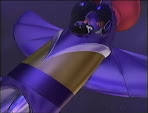
Back in 1967 NASA was shocked when they observed a new lunar satellite orbiting the moon in an irregular pattern. The satellite would be orbiting normally, and then dip toward the moon's surface without warning, gain speed, and shoot back up into normal orbit. Investigation of this problem led to the discovery of mass concentrations.
Mass concentrations or "mascons" are just that, concentrations of mass. The word can be used in different ways, but the most common refers to a large pocket of high density matter on or under the surface of a terrestrial body. In the moon's case, mascons are 6km thick sheets of basalt which form the maria.
Mass concentrations or "mascons" are just that, concentrations of mass. The word can be used in different ways, but the most common refers to a large pocket of high density matter on or under the surface of a terrestrial body. In the moon's case, mascons are 6km thick sheets of basalt which form the maria.

Now that I have explained a little of what mascons are, I can tell you what they do. Because mascons have more mass than the surrounding crust, they have a greater gravitational pull. This is why things orbiting the moon dip and sway as they pass over a mare; the mare's mascon is pulling the satellite out of orbit. Because of this, spacecraft cannot safely orbit the moon for more than 2 months*. (Luckily NASA discovered this before they sent people to the moon.)
Believe it or not, the Earth has mascons too! They are not as extreme as the moon's, but still do change the weight of objects over them. Two of the largest and strongest are Hawaii and a large crater in Antarctica.

*There are four stable orbits around the moon that do not pass over mascons, and safe orbits can be achieved over mascons with the aid of computers and rockets.
Sources:
http://science.nasa.gov/headlines/y2006/06nov_loworbit.htm
http://earthobservatory.nasa.gov/IOTD/view.php?id=6862
Word Book Encyclopedia 1997 Edition
http://www.higp.hawaii.edu/
Top two photos courtesy of NASA
Lower photo from Google Earth


No comments:
Post a Comment
All comments will be reviewed by this blog's administrator prior to being shown. Questions, corrections, suggestions, compliments and general comments are welcome. However, this blog is intended to be clean, informative and safe for children to view, so do not include any inappropriate, offensive or questionable content if you want your comment(s) displayed.
Thank you!